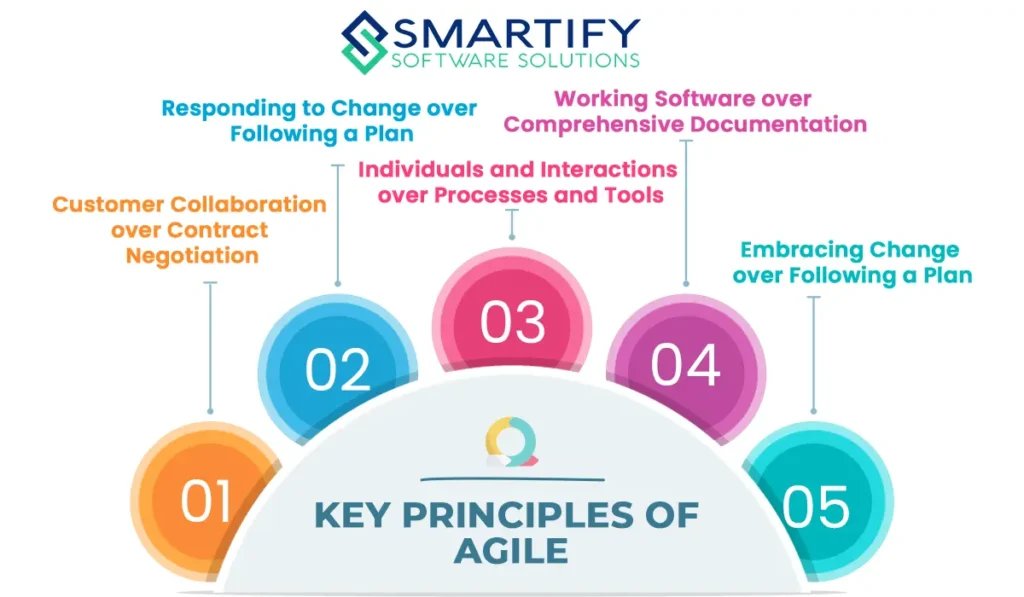In today’s rapidly evolving world, businesses are constantly challenged to adapt swiftly to changing environments, customer needs, and market dynamics. This is where Agile methodology comes into play, offering a flexible approach to project management that emphasises collaboration, adaptability, and iterative development. Let’s dive into the basics of Agile in simple terms.
What is Agile?
Agile is like a flexible toolbox for managing projects. Instead of following a rigid plan from start to finish, Agile breaks down projects into smaller chunks called “sprints.” Each sprint focuses on delivering a small, manageable piece of the overall project, allowing teams to respond to feedback and changes quickly.

Key Principles of Agile
1. Customer Collaboration over Contract Negotiation
Agile prioritises working closely with customers throughout the project. By involving customers early and often, teams can ensure that the final product meets their needs and expectations.
2.Responding to Change over Following a Plan
Unlike traditional project management methods that stick to a fixed plan, Agile welcomes changes and adjustments. Teams continuously evaluate progress and adapt their approach based on feedback and new information.
3.Individuals and Interactions over Processes and Tools:
Agile values people and communication above strict processes or tools. By fostering collaboration and open communication within teams, Agile encourages creativity and problem-solving.
4.Working Software over Comprehensive Documentation
Rather than focusing solely on documentation, Agile emphasises delivering working software at regular intervals. This allows teams to gather feedback early and make necessary adjustments, ensuring the final product meets user needs.
5. Embracing Change over Following a Plan
In Agile, change is seen as a natural part of the development process. Instead of resisting change, Agile teams embrace it as an opportunity to improve and innovate.
Agile in Action
Imagine building a house using Agile methodology. Instead of creating a detailed blueprint upfront and sticking to it no matter what, Agile would involve building the house in stages.
– First, you might focus on constructing the foundation during the initial sprint.
– Then, you’d move on to building the framework and walls in subsequent sprints.
– Throughout the process, you’d continuously gather feedback from the homeowner, making adjustments and improvements along the way.
Benefits of Agile
-Flexibility: Agile allows teams to adapt quickly to changes, ensuring that the final product meets evolving requirements.
-Increased Collaboration: By involving stakeholders throughout the project, Agile promotes collaboration and shared ownership.
– Faster Delivery: Delivering smaller increments of work in short iterations enables teams to get valuable feedback early and deliver working solutions faster.
– Improved Quality: Continuous testing and feedback loops in Agile help identify and address issues early, leading to higher-quality products.
In conclusion, Agile is all about flexibility, collaboration, and delivering value incrementally. By embracing Agile principles, teams can navigate complex projects more effectively and ultimately deliver better outcomes for their customers. Whether you’re building software, launching a new product, or embarking on any project, embracing Agile can help you stay ahead in today’s fast-paced world.






One thought on “Embracing Agility: A Simple Guide to Understanding Agile Principles”
Comments are closed.